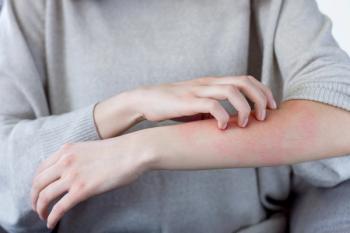
New Data at EADV Could Offer Hope, Address Gaps in Dermatology Care
Discover groundbreaking research on hard-to-treat skin conditions like hidradenitis suppurativa and vitiligo at the EADV 2025 Congress in Paris.
Conditions such as hidradenitis suppurativa (HS), vitiligo, prurigo nodularis (PN) and atopic dermatitis (AD) remain some of the most difficult skin diseases to treat. Although there have been advances in dermatology, patients living with these chronic immune disorders tend to face limited treatment options, unpredictable outcomes and lasting effects on quality of life.
At the upcoming European Academy of Dermatology and Venereology (EADV) 2025 Congress in Paris, researchers will present new data that could open up new therapeutic approaches, including late-stage trial results for oral and topical JAK inhibitors.
Unmet Needs in Dermatology
HS is a severe condition that can cause much burden to those affected by it. It causes
In 2023, it was estimated
PN is also characterized by intense itching and firm nodules that can cover the body, yet few targeted therapies exist
Vitiligo presents another challenge. The autoimmune condition that
AD, one of the most common chronic inflammatory skin disorders,
Taken together, these conditions highlight a central issue in dermatology: patients face daily struggles with diseases that are painful, stigmatizing and have long had limited treatment options.
New Data at EADV
At EADV, Incyte will present multiple late-breaking abstracts featuring
Key sessions include phase 3 interim results from the STOP-HS program evaluating povorcitinib in moderate to severe HS and results from phase 3 studies of ruxolitinib cream in PN. Additional analyses will cover vitiligo and atopic dermatitis, including pediatric and long-term safety data.
Pablo J. Cagnoni, M.D., president and head of research and development at Incyte, said in a release that “the late-breaking data from the STOP-HS clinical trial program reinforce the potential of povorcitinib to benefit patients impacted by hidradenitis suppurativa, a challenging and debilitating immune-mediated dermatologic condition.”
Cagnoni added that data on ruxolitinib cream in new patient populations “continues to demonstrate safety and efficacy in individuals with (AD), vitiligo and (PN).”
The research presented at EADV shows a growing focus on immune-targeted treatments that could change dermatology care. For HS, which currently has only one FDA-approved biologic, Humira (adalimumab), any new effective option could make a real difference for patients. In PN and vitiligo, where treatment options have been limited, even small improvements are important.
According to the
For patients, new treatment options mean more than clinical endpoints—they represent a chance at improved daily life.
Pain control, itch relief and visible skin improvement can reduce the stigma and mental health burden that accompany many of these diseases. However, whether patients truly benefit will depend on approvals, insurance coverage and equitable access once therapies reach the market.
While much of the discussion at EADV will revolve around trial results and how treatments work, the bigger picture is clear: dermatology is making progress, giving new hope to patients with chronic skin conditions that were often ignored.
Newsletter
Get the latest industry news, event updates, and more from Managed healthcare Executive.





















































